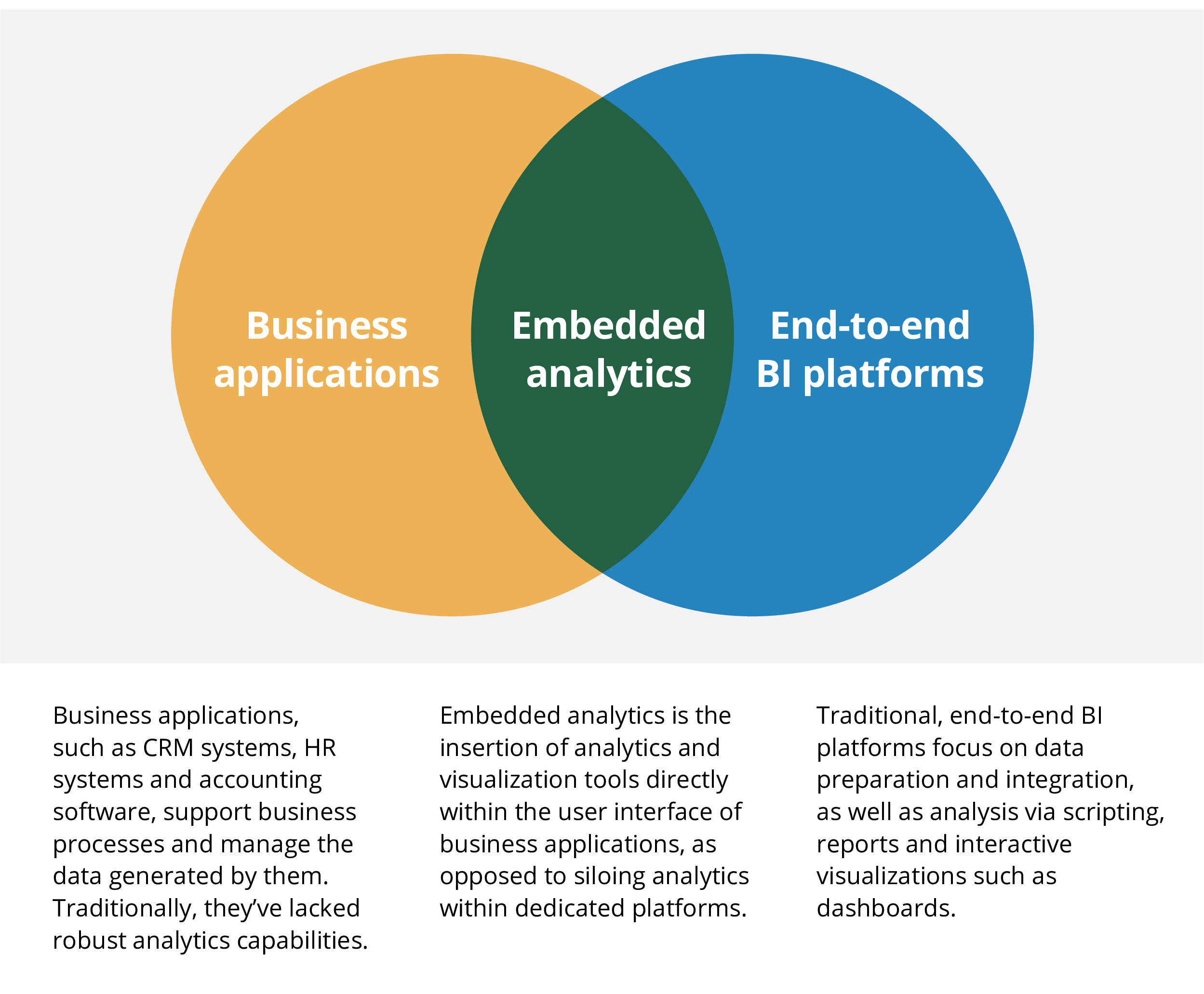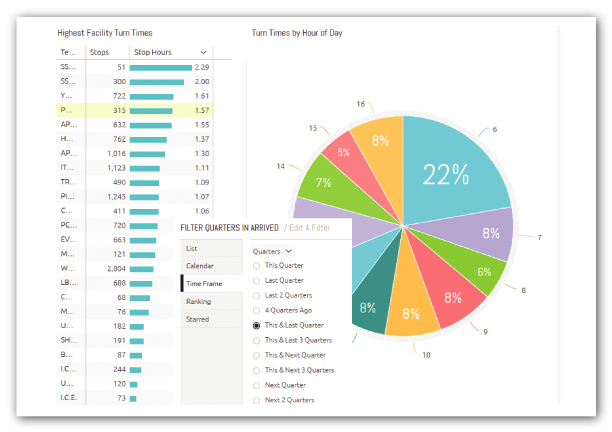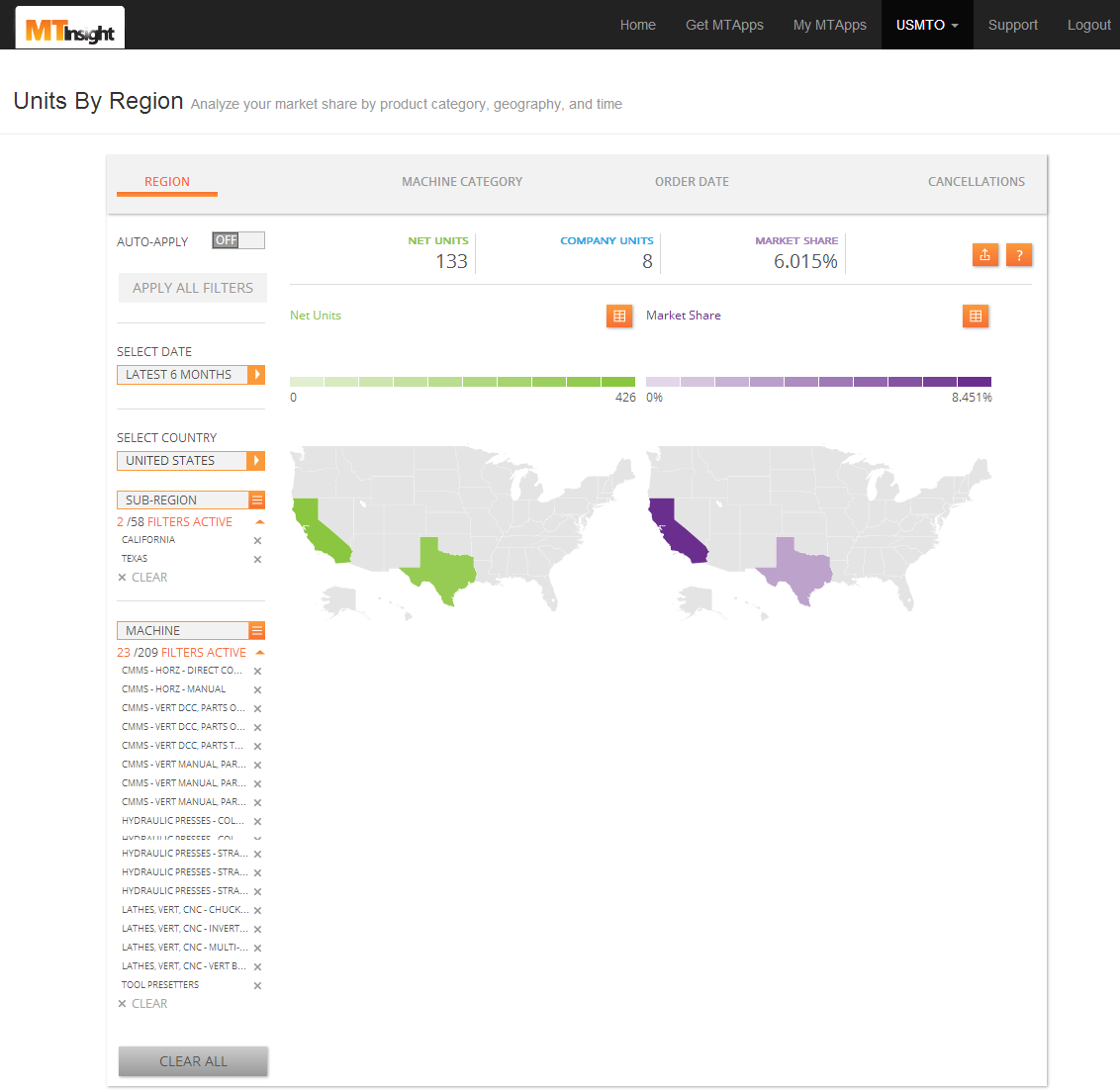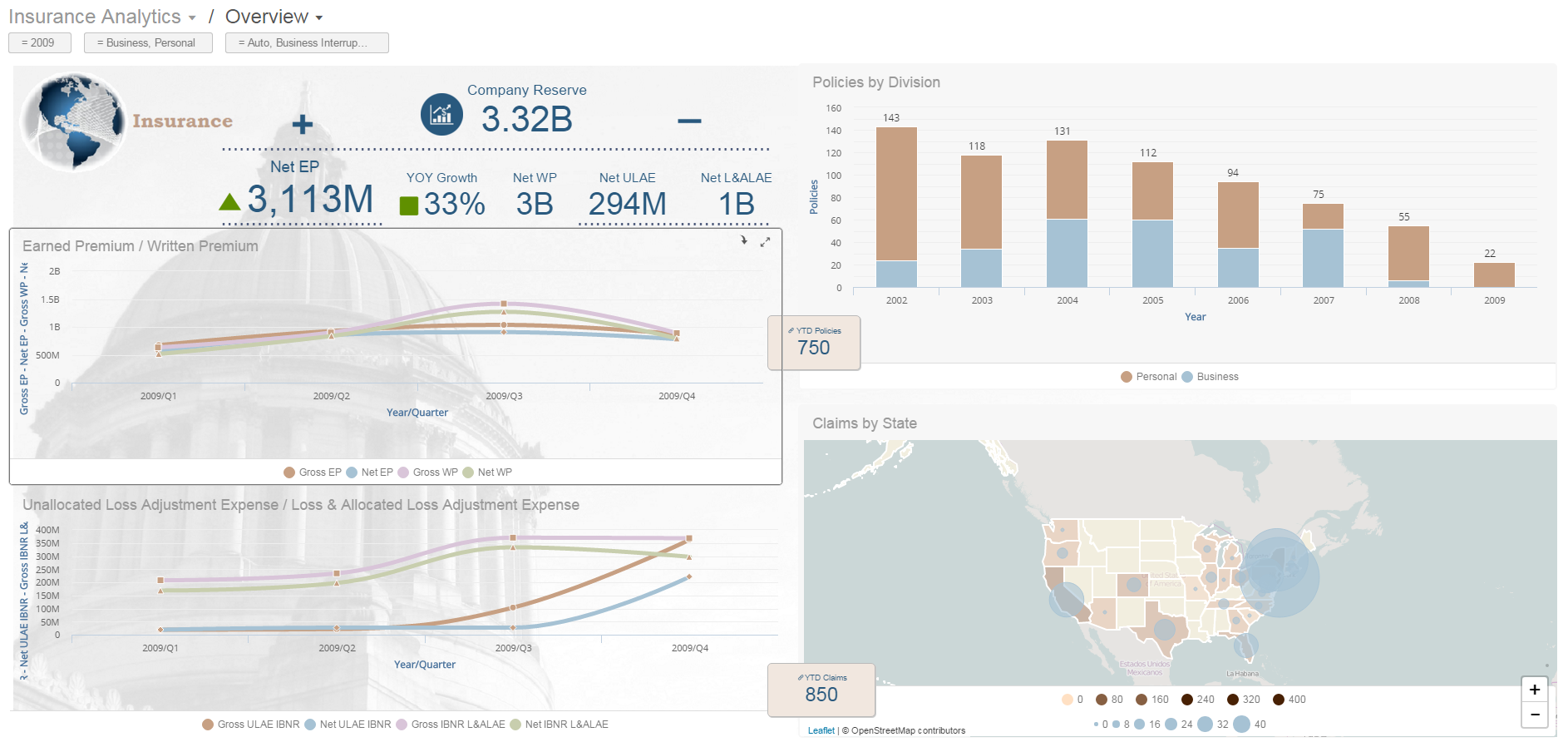A Guide to Embedded Analytics: Use Cases and Benefits
The battle-worn slogan of Apple’s App Store (which I need not repeat here) is slowly being replaced by “there’s analytics for that.”
In the past, reporting capabilities such as dashboards were limited to Fortune 500 companies that could afford to build complex and expensive data warehouses.
Now, dashboards are popping up in consumer products such as the FitBit, and more commonly in business applications such as customer relationship management (CRM), HR, financial management and supply chain management software.
Driving this trend is the explosively growing market for embedded analytics, which are basically analytics capabilities bundled into business applications other than traditional business intelligence (BI) platforms.
Embedded Analytics’ Relationship to Traditional BI
and Business Applications

We’ve interviewed experts at major vendors of embedded solutions to help you understand the benefits that embedded analytics prepackaged in business applications offer. Our guide will also help you to determine whether your organization should embark on its own embedded analytics projects.
We’ll cover the following topics:
(Click on a link below to jump to that section.)
What Types of Analytics Can Be Embedded?
What Are the Benefits of Embedded Analytics?
What Are the Use Cases for Pursuing an In-House Embedded Analytics Project?
What Is Embedded Analytics?
Business applications have long offered basic reporting capabilities. One example is the ability to export sales reports in Excel format from a CRM system.
These capabilities fall short, however, when it comes to exploratory data analysis and visualization, which have remained the province of traditional BI tools used by business analysts.
Increasingly, sales managers, logistics managers, HR managers and other roles are demanding timely, visual and interactive access to the kinds of data they work with in their business units. Moreover, they expect analytics will be seamlessly integrated into the applications they’re already familiar with.
To meet this demand, business application vendors from markets such as CRM, HR and others have begun packaging analytics capabilities such as dashboards and charts in their suites.
Analytics can also be integrated in more subtle ways, which we’ll examine later.
Generally, analytics capabilities aren’t developed in-house by the CRM or HR vendor. Instead, BI vendors such as Birst, Sisense or Pentaho develop the analytics and sell them to the business application vendor, which packages the analytics into the product and then re-sells the BI vendor’s tools.


Sisense analytics embedded in transportation management software
In some cases, the business application vendor publicizes its partnership with the BI vendor. In others, the BI vendor’s name is removed, such that you’d never know that the analytics module in your CRM system was actually developed by a third-party vendor (a software marketing tactic known as “white labeling”).
Farnaz Erfan, senior director of product strategy at Birst (a vendor of end-to-end BI platforms as well as embedded analytics), explains that: “Traditionally, the interest in embedded analytics has been from software companies that have developed information-centric applications, such as HCM, ERP and CRM systems.”
However, there’s another way in which embedded analytics are transforming business operations. Some organizations, most of them enterprises, have developed in-house, “DIY” embedded analytics solutions for their employees, customers and business partners.

“Lately, we’ve seen this market expand beyond software publishers to enterprises with rich data sets, in industries such as financial services, healthcare and telecommunications. These enterprises focus on providing services rather than selling software, but they’re building data products with embedded analytics.”
Farnaz Erfan, senior director of product strategy at Birst
**Since such projects are expensive and technically complex, you’ll need a compelling use case before you consider one.** Buying analytics pre-packaged in a business application is a much more feasible option for most businesses. They can also expand the capabilities of end-to-end BI platforms into embedded contexts via rich API sets.
What Types of Analytics Can Be Embedded?
In most cases, embedded analytics provide robust reporting functionality and interactive visual dashboards.


Embedded market share dashboard created with Pentaho analytics
Ben Hopkins, senior product manager at Pentaho (a vendor of data integration and business analytics solutions), explains that “in many cases, the analytics applications are embedded in the web user interface layer [of the business application] using JavaScript and web-based APIs.”
Hopkins continues that APIs can be used either for white label or in-house embedded analytics projects, as long as the project focuses on a browser-based application.
It’s important to note that embedded analytics goes far beyond visual analytics and reporting.
The analytics capabilities currently being embedded in business applications are expanding into a territory that Aviad Harell, co-founder and VP of OEM at Sisense (a vendor of business analytics software which is very active in the embedded analytics market), calls “reactive operational analysis.”

“Traditionally, BI and analytics was all about reports and nearly static dashboards. Now, the demand for analytics is much more proactive. This means not just consuming a report or static dashboard, but generating an actionable outcome from the analytics, e.g. an alerting mechanism such as a text message, an email or even a Slack message when a KPI exceeds a threshold.”
Aviad Harell, co-founder and VP of OEM at Sisense
Hopkins gives a helpful example:

“We have a customer that is looking at snapshots of sensor data from industrial equipment. In this case, the data integration workflow outputs some sort of estimate such as remaining useful life in the case of industrial equipment. Traditionally, this output gets consumed in reports and analytics, but the application can also send out a notification or alert if an asset is beyond the threshold.”
Ben Hopkins, senior product manager at Pentaho
Generally, the analytics involved in this context are predictive rather than descriptive—they forecast trends and outcomes on the basis of historical data instead of just describing the data.
Hopkins notes that while predictive analytics is still an emerging technology, it’s actually quite simple for organizations to create predictive analytics applications when relying on the expertise of an established BI vendor.
“You can drop predictive algorithms into Pentaho’s visual workflow builder for data integration to apply as part of the process, but you need to bring your own models from R or other tools,” he says.
“We add value in operationalizing these algorithms, because you already have a visual workflow to prepare the data for analytics, feed the right data through the model on a controlled basis, publish it to reports and visualizations and integrate alerting functionality.”
What Are the Benefits of Embedded Analytics?
Many of the benefits offered by embedded analytics will be specific to the business application to which they’ve been added, but there are a few overarching trends in the areas of:
User Interface (UI) and User Experience (UX)
Data Blending and Mashups
Process Optimization
UI and UX
With respect to UI and UX, the primary benefit is what Hopkins calls “the seamlessness of user experience.”
Traditionally, users have had to rely on separate tools, some of which were applications supporting business processes (e.g., CRM systems, order management systems etc.), whereas others were applications dedicated to analytics.
Now, a sales manager can simply log into a standard CRM system and make data-driven decisions using tools natively embedded within the suite.
Data Blending and Mashups
Data blending and mashups are a related benefit of embedded analytics.
Blending data from different sources for analysis is still a daunting technical challenge compared to analyzing data from a single source.
While business applications frequently enable users to visualize data captured by the application (e.g., sales figures in a CRM system), they frequently lack the ability to combine this data on the fly with other data sources.
Erfan gives a good example specific to the role of sales manager: “I may have an Excel spreadsheet on my desktop that shows me goals, and an application that shows me my progress toward these goals, but I still have to manually compare the analytics with which the software provides me with my Excel spreadsheet.”
In this case, the manager could make a better-informed decision by blending the Excel data with the application data, but this kind of data integration generally demands embedded analytics.
Process Optimization
Additionally, embedded analytics such as dashboards can facilitate process optimization.


Birst dashboard customized for the insurance industry
Hopkins details a sample use case from the financial services sector: “a banker has to approve or deny a loan. He or she enters in the information and gets analytics back, not just a few reporting lines but potentially interactive visualizations such as charts and graphs, in order to help with the decision.”
What Are the Use Cases for Pursuing an In-House Embedded Analytics Project?
These benefits can be achieved simply by purchasing a business application with analytics embedded in it. However, there are also cases in which it makes sense for your organization to develop the analytics applications in house, by partnering with a BI vendor.
Harell explains that the basic use case here is fairly straightforward: “Most enterprises interested in embedded analytics need it for operational monitoring and operational dashboards.”
Many businesses can achieve this kind of operational monitoring with the out-of-the-box embedded analytics modules in their ERP systems, accounting software, CRM software etc., but in some cases enterprises need to standardize their reporting.
Hopkins notes that CERN, the research organization that operates the Large Hadron Collider, turned to Pentaho for precisely this reason:

“Essentially, CERN wanted to embed our analytics across a number of business applications used by departments such as finance, human resources and logistics in order to provide seamless access to analytics in daily processes. Having role-based access rights to analytics that are consistent with their own systems and applications was a major part of the use case.”
Ben Hopkins, senior product manager at Pentaho
Generally, however, in-house embedded analytics projects are more limited in scope than the CERN project we’ve just considered, and focus on a specific, mission-critical application.
Erfan notes that the internet of things (IoT) is also driving embedded analytics projects:

“There’s also gathering momentum with IoT applications and IoT-generated data. We have some customers with hardware products that generate data from their device usage, and these customers are putting analytics on top of that data to create analytic applications that serve their customers or partners.”
Farnaz Erfan, senior director of product strategy at Birst
Finally, there are a few industry verticals in which embedded analytics projects are particularly common, namely:
Healthcare
Telecommunications
Financial services
These industries all have one thing in common: They’re flooded with data.
In healthcare in particular, Harell observes that regulatory frameworks have generated the need for standardized reporting and analytics. We can conclude that the need for accountability and audit trails in financial services is similarly fueling the development of embedded analytics products.
Telecommunications companies are primarily moving into embedded analytics due to the new types of data they can analyze.
As Erfan explains, “telecommunications is very rich in terms of mobile data, which is useful to retailers and advertisers.”
If you’re in one of these industries, and you’re seeking ways to monetize your data assets, it might make sense to consider an embedded analytics project via a strategic partnership with a BI vendor.
Conclusions
For the time being, embedded analytics will co-exist alongside traditional, end-to-end BI platforms.
This relationship can pose data integration challenges for IT, but it’s mostly beneficial, as embedded analytics supplement the capabilities of traditional BI solutions for users that have traditionally been more or less shut out from access to analytics.
Currently, embedded analytics is largely the province of software publishers focusing on business applications, as well as enterprises with specialized needs. That said, many of the benefits of embedded analytics can be achieved with the analytics modules prepackaged in business applications.
According to Gartner, a research and advisory firm (the full report is available to Gartner clients):
“When selecting new business applications, companies should focus their search on solutions that offer embedded analytics or have a clear roadmap to deliver it in the near future. Start by looking for specific analytic applications that complement your ERP and BI platform investments. In the long term, review vendor capability to support reusable analytics artifacts (i.e., services) in a service-oriented architecture environment.”
As IoT and big data technologies mature, in-house embedded analytics projects will become increasingly prevalent. It may be time to consider getting a head start, particularly if your organization is a digital business.
We offer reviews, pricing details and product overviews of many of the BI vendors active in the embedded analytics market here.